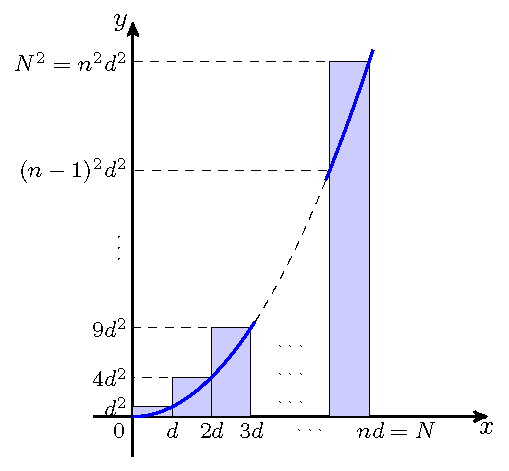Exercises – Long Day#
Exercise 1: Repetition Exercise on Recursion#
We recursively define a sequence of numbers
Which values do
Answer
and
Question 2: Derivative Functions and Induction#
As is known from high-school, it applies for all
Question a#
Formulate the base case of the induction. Then check that this base case holds.
Hint
Because we are showing that
Answer
The base case of the induction is the proposition that the formula
Question b#
Now formulate the induction step. What is the induction hypothesis in this case?
Answer
The induction hypothesis is that the equation
Question c#
Show that the induction step holds. The induction principle now implies that the formula
Hint
Note that
Answer
The product rule combined with the induction hypothesis gives that
By the way, note that the formula
Exercise 3: The Sum of Odd Numbers and Induction#
Question a#
Compute for
Hint
The found values are always squares.
Answer
Based on the above it is reasonable to guess that
Question b#
Let
Show that the base case of the induction holds.
Hint
The base case of the induction is the proposition
Answer
Question c#
Now carry out the induction step and then use the induction principle to conclude that
Hint
In the induction step one must show for an arbitrary integer
Hint
For the induction step the recursive definition of the summation symbol given in Equation (5.5) in Chapter 5 of the textbook can be of good use.
Exercise 4: Multiplying into Parentheses#
Let
You may use the fact that the equation holds true for
Hint
The base case of the induction follows from Theorem 3.2.2 if you in this theorem choose
Hint
For the induction step:
Hint
From Equation (5.5) in the textbook we see that
Can Theorem 3.2.2, part (iii), now be used to continue?
Opgave 5: The Geometric Series: part 1#
Spørgsmål a#
A bouncy ball is dropped from two metres above the floor. After hitting the floor, it bounces up one metre again before falling back to the ground. After hitting the floor the second time, it bounces up half a metre, then a quarter metre the third time, and so on. In other words, the fall height is halved with each impact with the floor.
Let
Hint
After the first bounce, the ball has moved 2 metres, as it was dropped from 2 metres above the floor. By the second bounce, the total distance becomes
Svar
For
Exercise 6: The Geometric Series: part 2#
Let
Question a#
Why can
Answer
If
Question b#
Check that the identity holds for
Hint
If we consider the expression
Question c#
Show that the identity
Hint
Use induction on
Hint
The induction hypothesis is that
Question d#
Let us return to the bouncy ball from Exercise 5. How many metres has the ball traversed in total before it lies still on the floor?
Hint
Choosing
What do you get when
Svar
Exercise 7: An Inequality#
A sequence of real numbers
Question a#
Compute
Answer
If needed, numerically with many decimals:
Question b#
The claim is now that for all natural numbers
Hint
For the induction step you may use the fact that the square root function
Exercise 8: A Sum with Fractions#
Show that the identity
applies for all
Exercise 9: Area under a Parabola#
Let
In this exercise we will investigate how well we can approximate this area by using the finite sum

Question a#
Use the drawing to realise that
Question b#
Use the result from Exercise 4 to realise that
Question c#
Use induction on
Hint
With the induction step you will at some point reach the formula
You can of course multiply through and expand the expression to see if you get the correct result. But it can save you a lot of work to first bring
Now try to first realise that the expression within the brackets is equal to
Answer
The base case of the induction: If
The induction step: If
For example, by following the above hint it should be possible to realise that
Question d#
Now show that
Note: The equation implies that if
Answer
From the previous questions we get
For the final equality we used that
